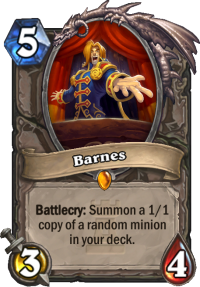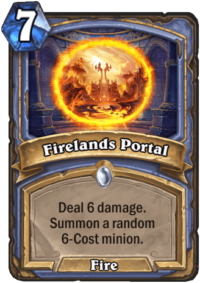It’s time to discuss the final of the classic Hearthstone adventures, the one with Medivh and the demon and the annoying characters in the tower. Unfortunately, the crazy days in Karazhan may have been a good foundation for an interesting thematic setup, but the execution was not up to the standards set by the game’s previous PvE content.
Check out other parts of the series:
One Night in Development
“You know what they say, in Karazhan the party never ends.
(Mostly because the ghosts are forced to re-live their final moments for all eternity while Sargeras possessed Medivh loses his mind and slaughters anyone around him.)”
/u/WordsUsedForAReason in the cinematic trailer reveal discussion thread
Much like how Scholomance Academy has turned a ghoulish WoW story into candy corn Harry Potter stuff, visiting Karazhan in its heyday coupled with a banging disco soundtrack fits the mold of Hearthstone’s light-hearted takes on Warcraft lore. That said, ONiK was the first time they made such a massive stylistic departure and it wasn’t universally well-received by veterans of those games. Even though One Night in Naxxramas has shown that Team 5’s writing corps can balance authenticity with a bit of fun, the formula was off this time around. Medivh is immediately shunted off after the prologue – the freebie teaser where you get to play with a bunch of overpowered toys as the Guardian himself – and you as one of the first esteemed guests to arrive is tasked with sorting out the mess in the tower and rescuing the host to get the party started.
This means that unlike the first two adventures, your companions are allies instead of the villains – but unlike the League of Explorers, not only are they incompetent, but their only role in the story is to ignore your quest and stall your progress, making their unskippable dialogue all the more annoying. This also isn’t helped by how tame the quest is compared to the previous ones: it is, after all, about a party, and even Prince Malchezaar only wants an invitation. Instead, you need to rescue Medivh, but you can’t because Barnes forces you to watch a series of plays and The Curator won’t let you pass until you fix up the Menagerie. Each battle feels like an annoyance rather than an obstacle to overcome – made even worse by the fact that they are much easier than the previous ones. Normal was always meant to be passable in just a few attempts, but when both modes are doable on autopilot with basically any reasonable deck, it makes the experience a lot less fun. There’s a reason why Twitch chat often referred to the solo content as “One Night in Development”: when the only difference between a regular and a Heroic encounter is a bunch of extra armor slapped on, it has to be considered a step back from what we’ve seen before.
It’s not all bad though. The rubber ducky clickable on the board is among the greatest in the game’s history, and the added restart button was a long overdue quality of life feature. The chess battle and its auto-attacking minions stood out as a unique and exciting mechanic even at that time, and in a way, they paved the way for Battlegrounds today.
Purify and Other Sins

One Night in Karazhan has also aged particularly poorly in terms of its card design. Though the League of Explorers adventure card pool was always going to be a tough act to follow, the offerings here are nothing short of (disco) infernal, ranging from disheartening to disruptive. The adventure didn’t come with its own keyword, with only the “portals” (a targetable spell effect with a random minion summon) serving as the only brand new element, and it featured multiple faux-vanilla neutrals like Pompous Thespian, Pantry Spider or Arcanosmith which are neither strong nor interesting to play with. The “menagerie synergies” had to wait until the release of an entire new game mode to find a home.
That said, Netherspite Historian turned out to be a great value engine, Violet Illusionist made the occasional appearance in Mill Rogue, and Mages certainly liked to throw out 0 mana Arcane Giants, but that was about it. Also, just compare Karazhan’s list of neutral Legendaries (Moroes, Barnes, Prince Malchezaar, The Curator and Medivh, the Guardian) with LoE’s and try to decide whether to weep or vomit at the sight. Two playable cards, one easily a candidate for the most hated in the game’s history.
As for the class cards, it’s a mixture of forced archetypes and irrelevant cards. Druid’s got Enchanted Raven and Menagerie Warden in a bid to brute force a simple tribal archetype to tier 2, Warlock received two premium Discard synergy cards in the form of Malchezaar's Imp and Silverware Golem to brute force a simple keyword-based archetype to tier 2, Rogue’s got Swashburglar and Ethereal Peddler to brute force a simple Burgle-based archetype to tier 2, and then there was Hunter with Cat Trick and Cloaked Huntress to… you get the point. Still, at least some of these cards were relevant in the metagame, unlike the offerings received by Paladin (Nightbane Templar, Silvermoon Portal and Ivory Knight) or Warrior (Fool's Bane, Ironforge Portal and Protect the King!).
Then there was Priest, a class long stuck in the dumpster and in dire need of help, which received… Purify. Its reveal infuriated the community, and though Team 5 eventually did brute force a simple Silence-based archetype to tier 2 in Journey to Un’goro, it really wasn’t what Anduin needed at the time. Couple it with Onyx Bishop – a card which screws up its own resurrection pool and never saw play in its designated archetype – and Priest of the Feast, a great card in its own right but worthless in the context of Priest’s plethora of strong 4-drops at the time, and you can see how Anduin remained deep in the dumpster after the adventure’s release.
Purify Priest so bad I lost the class challenge -_-
/u/otterguy12 in the ONiK release thread on Reddit
The two real winners were Shaman and Mage, with Thrall earning two busted cards for a spell damage-enhanced midrange archetype which dominated the meta (hello Maelstrom Portal and Spirit Claws, originally just one mana for some reason) and Jaina picking up three strong cards which remained relevant in faster archetypes for basically the entirety of their time in Standard: Babbling Book, Medivh’s Valet and Firelands Portal. Though we all remember the talkative tome from Pavel’s World Championship miracle, it’s the portal which raises the blood pressure of a very different subset of players to this day…
When Your Adventure Even Manages to Mess up Arena

Then there was Firelands Portal. You might be wondering why this perfectly normal card (at least by modern Hearthstone standards) pissed of a decent portion of the community. Well, it was the rarity gem. Since this was a non-Legendary adventure card, the assigned rarity didn’t matter in terms of pack opening odds – its primary function apart from being a soft indicator of its complexity –, which made its designation as a Common card all the more egregious from the one perspective it actually mattered: Arena drafts. It doesn’t take much explaining (or experimentation) to realize how bonkers that card was in the game’s limited format, and with two or three copies of it regularly showing up in every Mage draft, the class was borderline unbeatable. Mike Donais’ answer in a PC Gamer article about the subject didn’t exactly please people, and apparently the long-term solution to Arena’s issues was meant to be the synergy-based drafting system, which turned out to be a spectacular failure.
At the risk of overloading you with salt, dear reader, here’s Kripp explaining the issues at the time:
The End of the Party
One Night in Karazhan was, of course, the last traditional adventure experience until Galakrond’s Awakening brought back the format in late 2019. However, as we’ve pointed out in our review, it no longer fit the same purpose in the release calendar, as instead of being the big showpiece content for one-third of the year, it’s essentially a fourth mini-set with little to no emphasis placed on the challenge of the PvE portion. (Which, by the way, is something Blizzard will do again with mid-expansion mini-sets.)
It is a shame to see it gone: normally, it brought along a smaller number of cards which were easier to obtain but could very well have the same sort of impact on the metagame. However, ONiK shows what it’s like when the model goes wrong and being stuck with the same wretched meta for so long certainly was an awful experience. On the other hand, it did lead us to Dungeon Runs, which is well worth re-examining today after the arrival of Duels. What do you know, we will have another series covering those!
